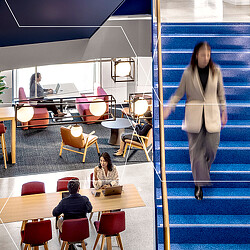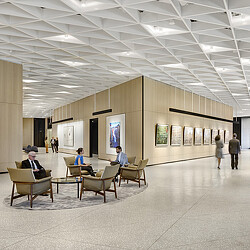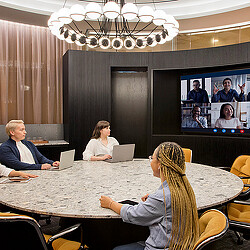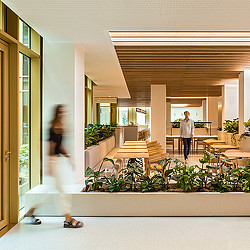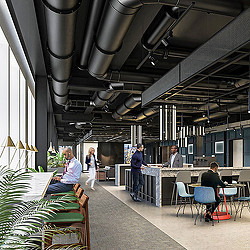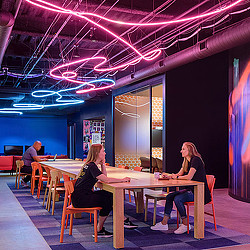The Convergence of Tech and the Financial Workplace
The financial workplace is taking cues from the tech industry, shifting from one-size-fits-most to always-in-beta.
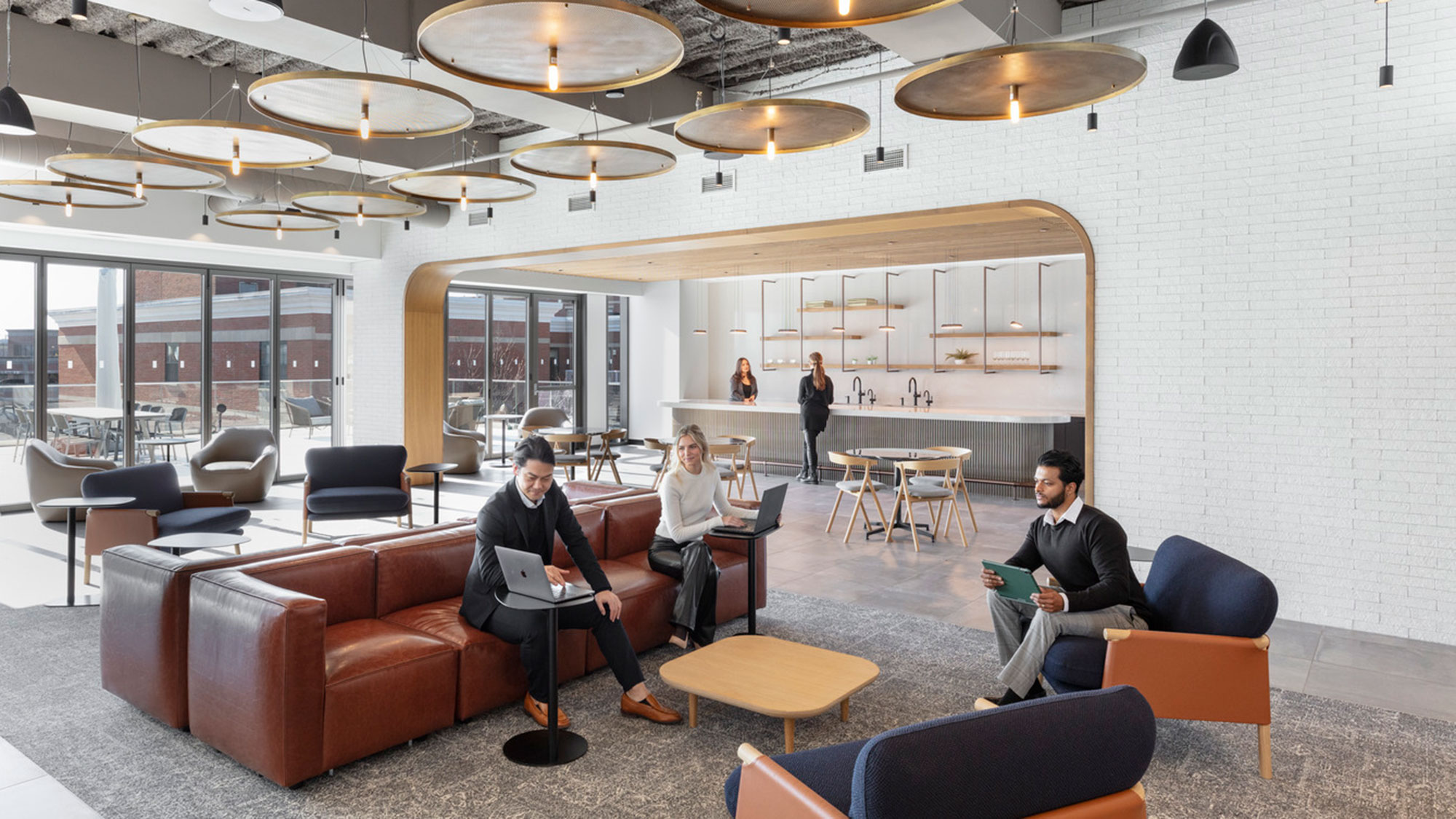
Today, we’re witnessing the intersection of two significant shifts in the financial services workforce. Over the past decade, technology-focused roles within financial services have grown substantially. According to a recent Forbes article, this growth accelerated dramatically with the advent of generative AI, driving financial institutions to compete for top technology talent. Big banks are rapidly building in-house capabilities in crypto, blockchain, and large language models (LLMs), leading to a surge in the number of technology professionals.
While there’s currently no exact count of technologists within financial services, this upward trend is unmistakable. At the same time, we’re seeing a coinciding shift, where some banks are asking all employees to be in-office, regardless of role.
What does this mean for the financial services workplace when it comes to designing a workplace environment that works for everyone?
The Convergence of Tech and Financial Services
According to Gensler’s 2025 Workplace Survey, when you compare tech employees to finance workers, they cite similar advantages of being in the office — but they prioritize these advantages differently.
Access to technology is a top benefit of being in the office for both groups and, unsurprisingly, technology employees rank this as their top reason for coming in. The second priority for the tech set is focused heads-down work. This contrasts with financial service employees, whose second and third priorities are team meetings and socializing, respectively.
Financial services workers rank focus work as the most important reason to come into the office, highlighting an important correlation between the two groups. Financial services and technology industry workers both spend more than one-third of their time working alone, of which nearly 75% requires deep concentration. Both groups also spend about 40% of time working with others, with at least half of meetings taking place in a hybrid setting.
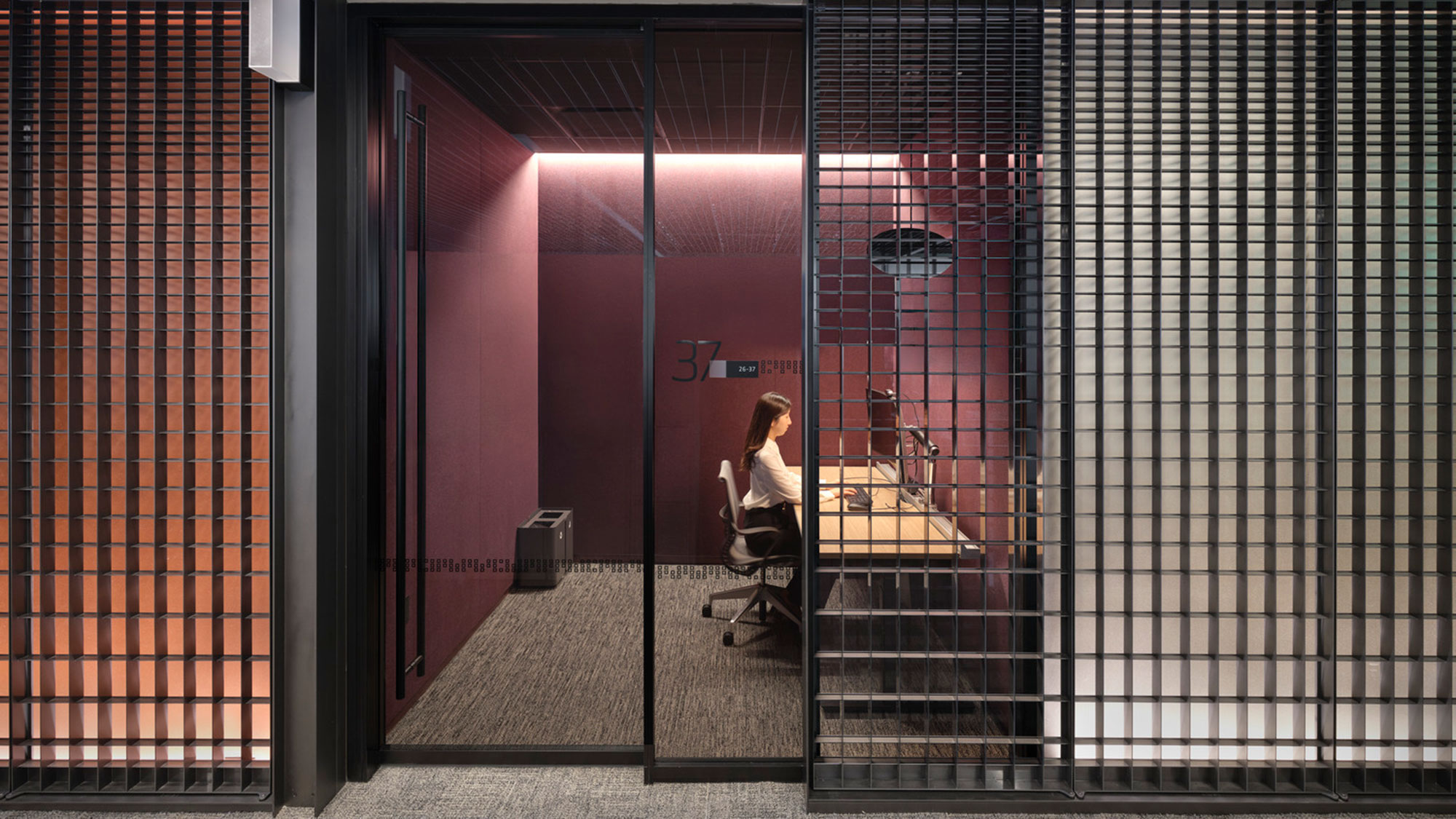
In other areas of the workplace ecosystem, tech and financial services workers’ workstyles and preferences are already beginning to converge. The return to office conversation has sparked interest in amenities and activating spaces, prompting financial services firms to draw inspiration from technology workplaces.
Hospitality-inspired designs featuring event spaces, yoga studios, and lounges are now common across both industries. Simultaneously, tech companies are transitioning from their disruptive startup roots towards more stable, predictable business cultures, blending innovation with steady performance.
With all of these factors in play, financial services firms will continue to benefit from adopting tactics from tech to create a workplace that makes employees feel productive, cared for, and energized by their office environment.
From Fuel to Culture: The Rise of Culinary Strategy
Tech giants like Google and Meta famously built their workplace cultures around food — not just as a perk, but as a strategic tool to limit decision fatigue and foster community. The result was a generation of employees whose daily rhythms revolved around the office.
Finance, historically more austere in its amenities, is now crafting its own tailored version of this model. We’re seeing a rise in curated food activations: full-service cafés serving plated meals at all hours, rotating pop-ups featuring guest chefs, and even on-floor sushi stations. These offerings don’t just feed people — they signal value, hospitality, and attention to detail. In a sector where time is precious and talent is expensive, food is becoming a new mode of care and curation.
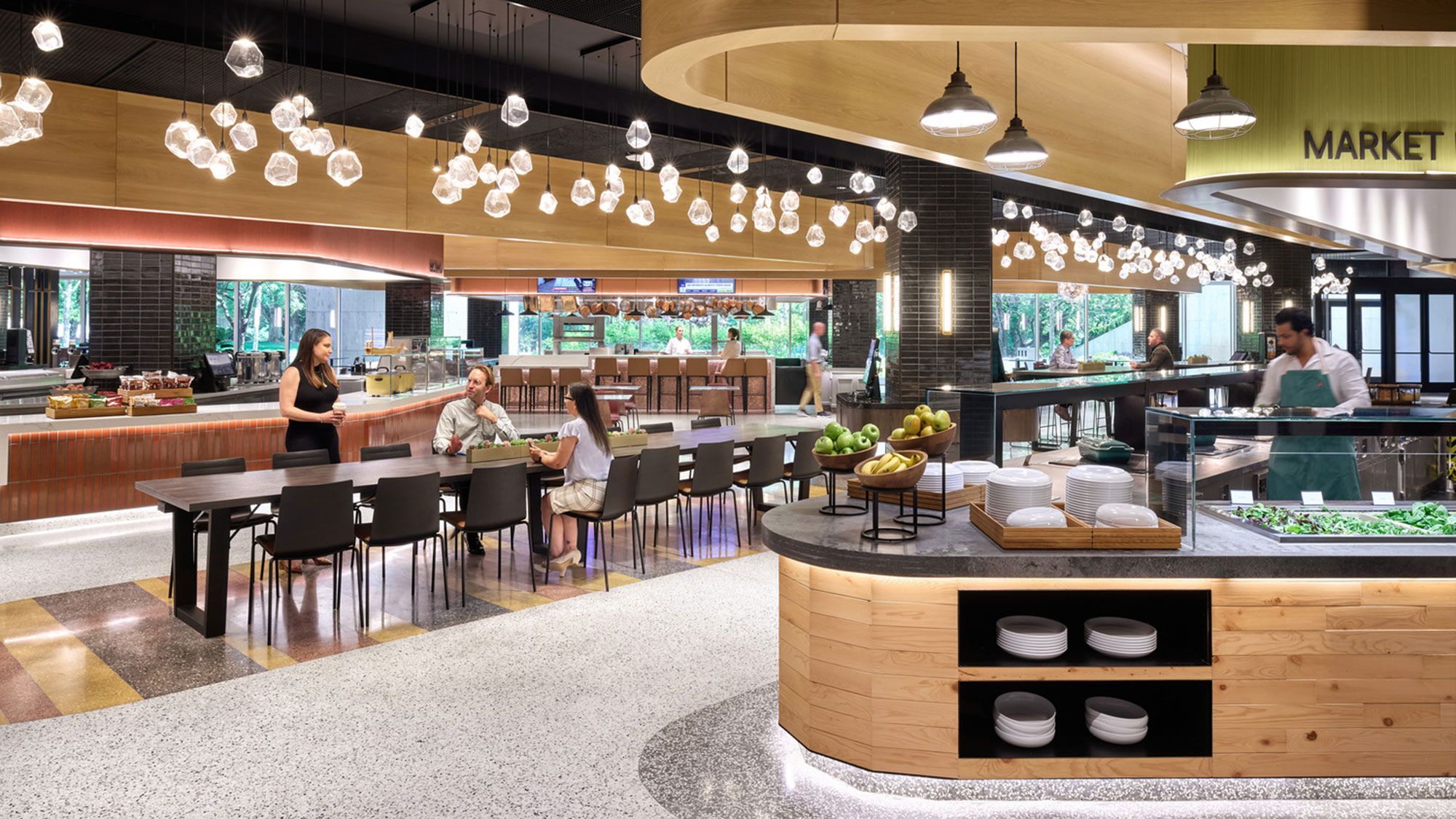
Screen Relief Through Space and Sensory Design
Both finance and tech industries demand intense screen time — but finance, long characterized by stark formality, is now softening its spatial edges in response to that digital fatigue. We’re seeing a shift toward biophilic elements, textured materials, and more organic form factors. Circadian lighting is finding a home in trading floors and meeting rooms, supporting focus by syncing with the body’s natural rhythms.
While these design choices may seem at odds with the buttoned-up DNA of financial environments, they are becoming essential tools for sustaining performance. The finance workplace is moving from cold efficiency to warm precision, with sensory wellness as a new priority.
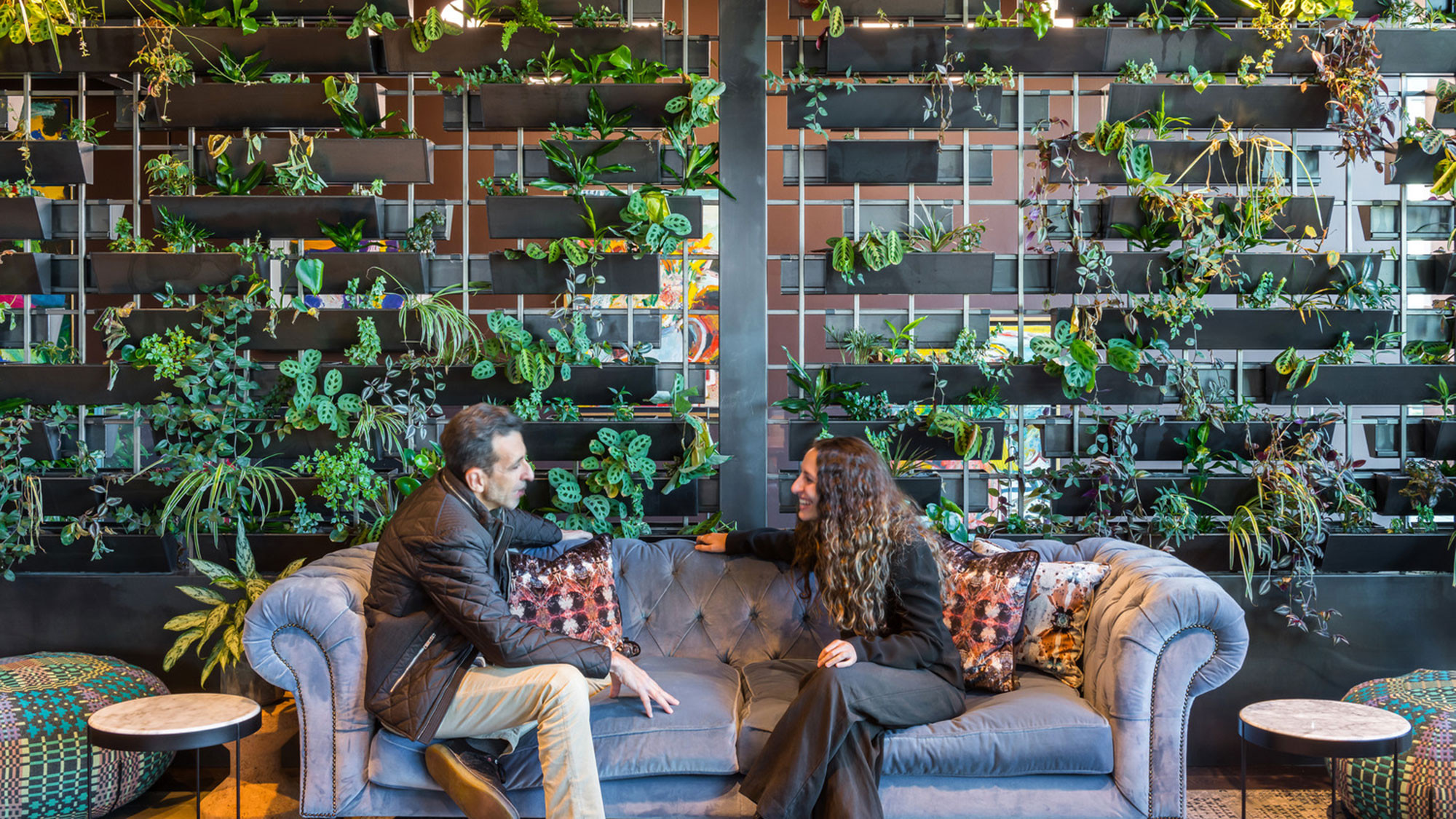
Relearning How to Learn — Together
If the pandemic revealed anything, it’s the invisible value of proximity. For nearly four years, the passive learning that happens through osmosis — overhearing a deal negotiation or watching how a senior partner frames feedback — was largely lost.
In response, we’re seeing an increased focus on in-office learning environments. Finance firms are carving out dedicated space for training, mentorship, and collaboration, echoing moves long made by tech to keep learning embedded in the daily workflow. These are not traditional classrooms, but dynamic, tech-enabled environments designed to encourage knowledge exchange and skill-building across experience levels. It’s a tangible reminder that returning to the office isn’t just about presence — it’s about progression.
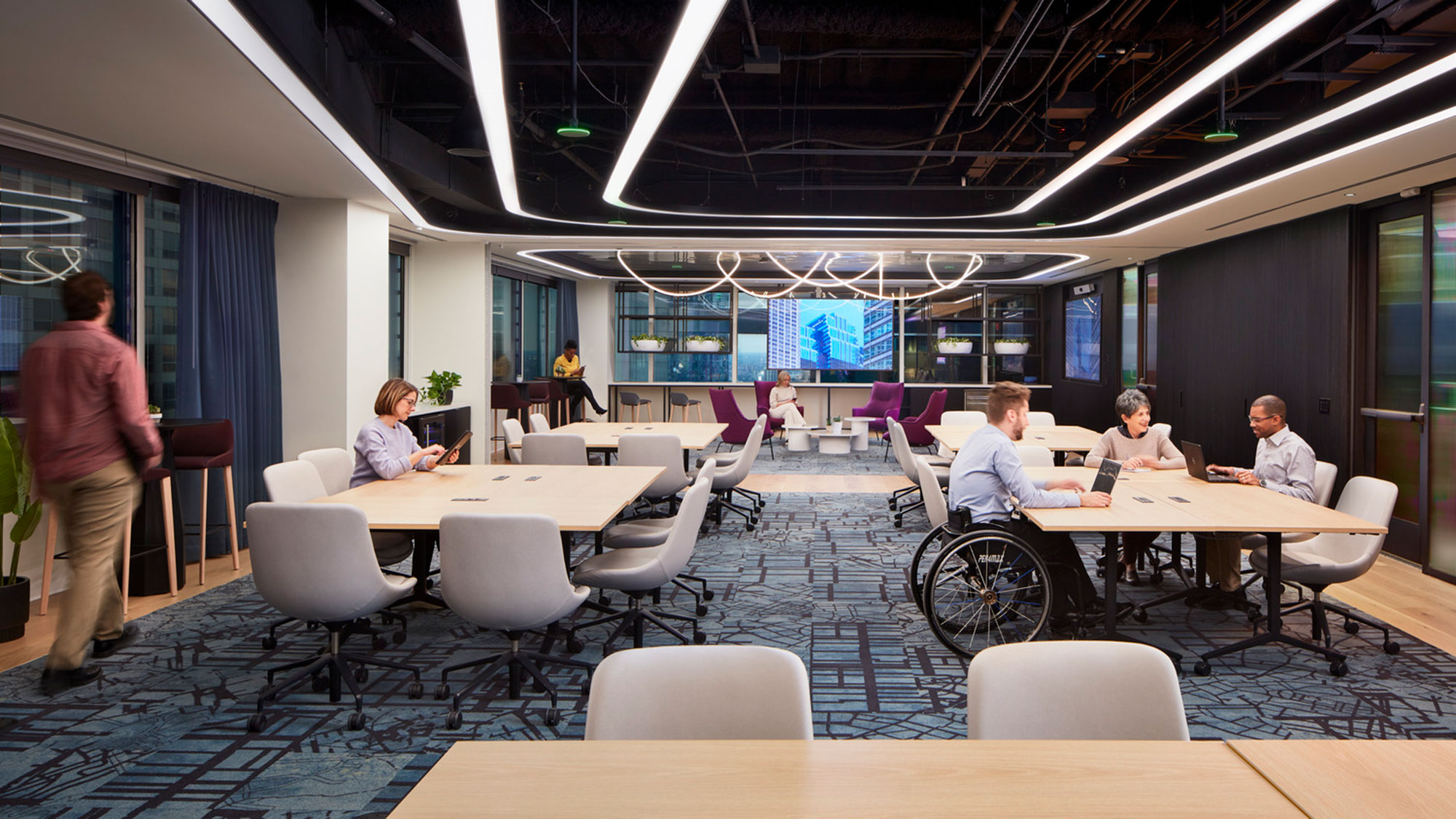
Designing for Buzz, Not Just Business
Building buzz has long been a hallmark of tech offices — engineered energy, visible collaboration, a hum of productivity that also serves as a powerful talent attractor. Finance, by contrast, has traditionally optimized its workspaces for heads-down focus and minimal distraction. But as the office reasserts its value post-pandemic, finance leaders are recognizing that atmosphere matters.
Vibrancy is now a deliberate design goal. Some firms are delaying floor openings or adjusting desk deployment to make space feel fuller, even with hybrid schedules. The goal isn’t noise for noise’s sake, but energy that signals momentum and presence. Like their tech counterparts, finance workplaces are becoming more intentional about the sensory experience of being at work — not just what gets done, but how it feels to do it.
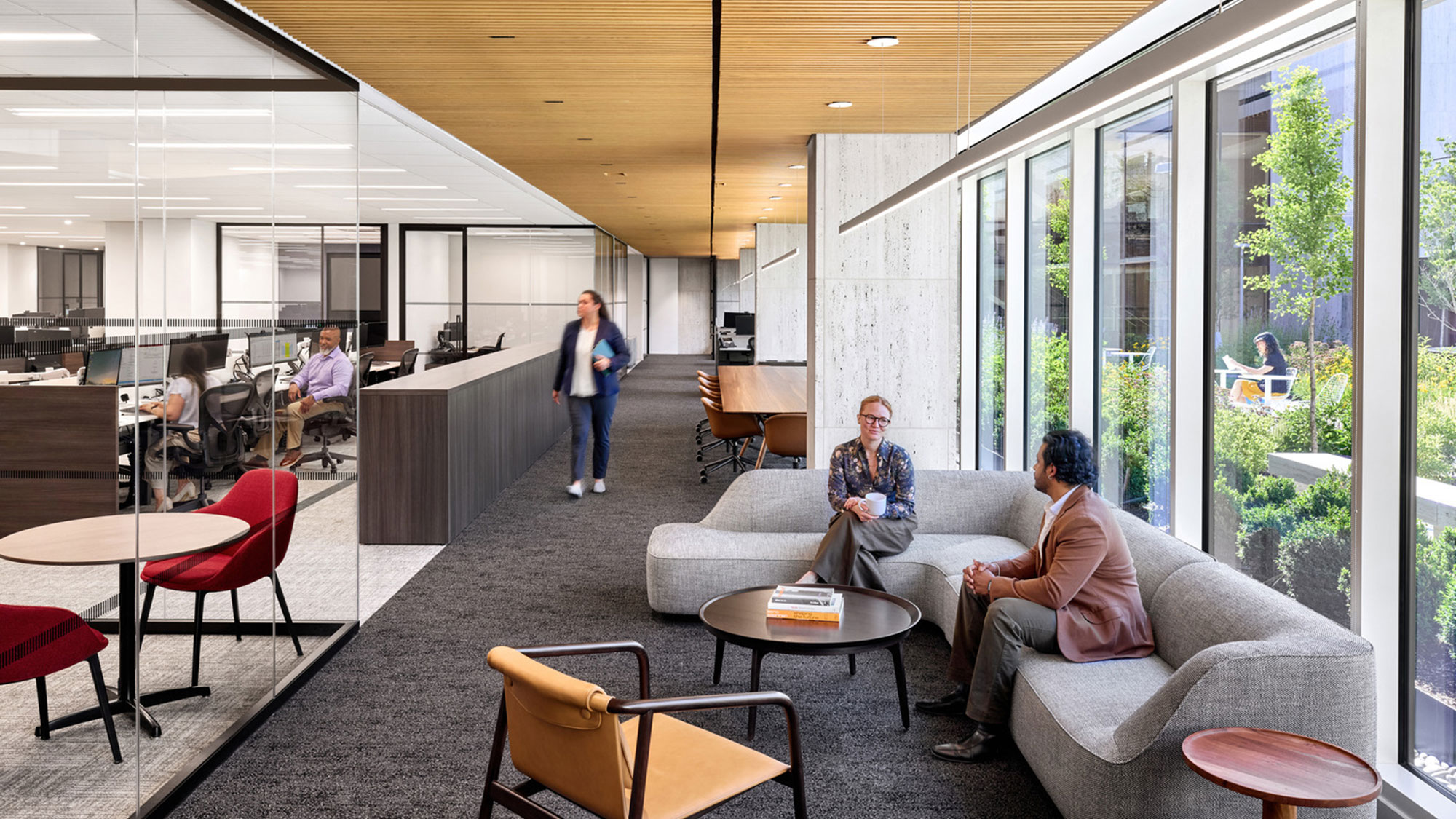
As technological advances open possibilities for new ways of working, physical places and spaces have gained new promise as tools for moving into a new era of growth, transformation, and success. For established firms, marrying creative placemaking with future flexibility and adaptability offers a viable path for propelling business into a new era of innovation and creativity.
For media inquiries, email .


